
The many islands of the Caribbean Sea are as unique a place to experience the amazing potential for speciation and diversity as the more famous Galapagos and Hawaiian islands are. The Lesser Antilles not only have a series of unique bird species, like Todys and Antillean Bullfinches, that are unique to individual islands, and for the herpers out there, the adaptive radiation of Anolis and Cnemidophorus (whiptail) lizards is as good as anything Darwin’s finches can throw at you, provided you’re willing to put your binoculars down for a minute and check them out.
As a hanger-on of my wife’s family I find myself this week in Aruba, one of the ABC islands just off the coast of northern South America. While Caribbean has many great and wonderful birding islands, Aruba isn’t really one of them. Where others are lush, it’s dry. Where others are mountainous it’s mostly flat. And where others have peaceful lagoons and white sandy beaches, it is akin to vacationing in a wind-tunnel. But dig a little deeper and there are birds nearly everywhere, which is one of the great things about birding.
I haven’t really been able to get out much (that changes today), but birding around out hotel has been more or less productive. In addition to the pretty incredible lizards, there are a few birds around including some local specialties. Here’s a short look at some of them.
As someone recently told me, Bananaquits always look supremely pissed off. It’s that glorious down-ward curving bill, adapted perfectly for slurping nectar from large, tropical flowers. But, in tourist-land, it serves them surprisingly well for gleaning uneaten french fries from plates.
Speaking of french fry nabbers, they don’t come more insidious than the Carib Grackle. It looks practically identical to every other grackle you might imagine except that it’s significantly smaller, which is kind of an odd thing at first. Outside of the ubiquitous House Sparrows, this is probably the most common bird on the island.
In addition to the smaller lizards, the island is overrun with Green Iguanas. This handsome fellow is the largest one I’ve seen yet at about a meter long but most are much smaller and, as my attempts to nab one have come to nothing so far, surprisingly quick.
Easily one of the highlights so far, Bare-eyed Pigeons are really unique. I have no idea why they have that ring of bare skin around the eye, but it gives an eerie look to what would otherwise be a fairly ordinary large, fruit-eating pigeon of the sort you find anywhere in Central and South America. They also have big, white bars on their wings which makes them pretty distinctive in flight.
This is the avian highlight of the trip so far. Brown-throated Parakeet is a pretty common species across much of Central American and northern South America, true, but Aruba, just like the other two islands that make up the Netherlands Antilles, has its very own endemic subspecies, arubensis. Is it it’s own species? There are those that say yes, and if it ends up split it likely needs some help as the species has been wrecked by the introduced Boa Constrictors that wreak all sorts of havoc on their nests, as I understand. Anyway, they prefer these large-leaved, red-fruited trees that I can’t identify and I haven’t seen one outside of that tree since I arrived.
Anyway, I’m really looking forward to getting out and seeing more of the island. Even if the big list is an impossibility here, new birds are fun wherever you are.

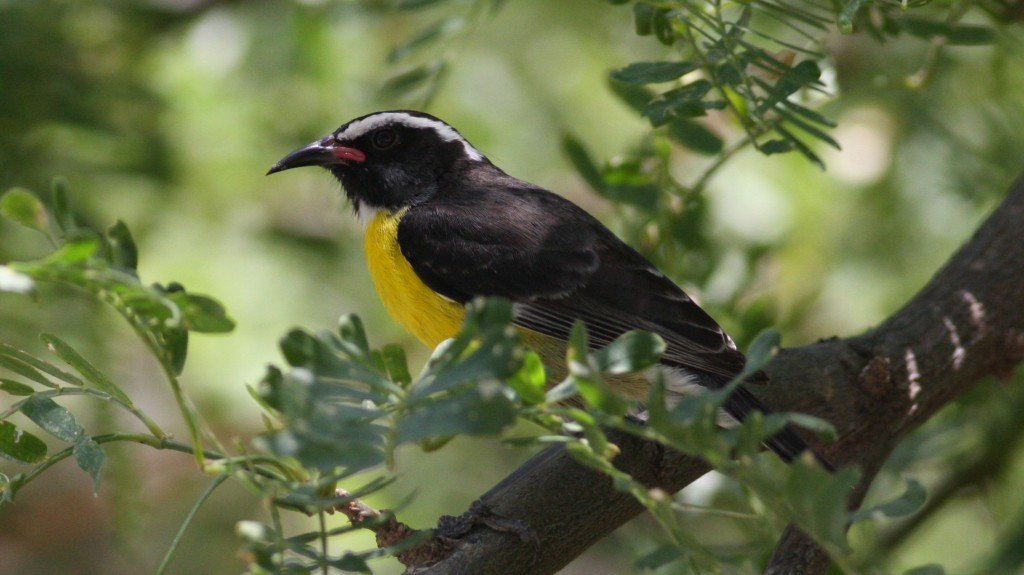
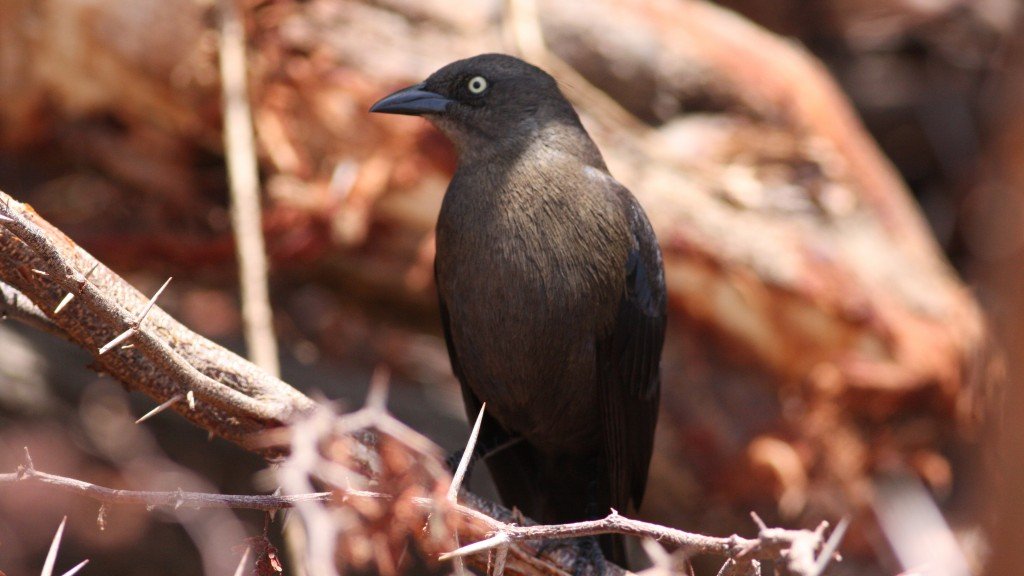
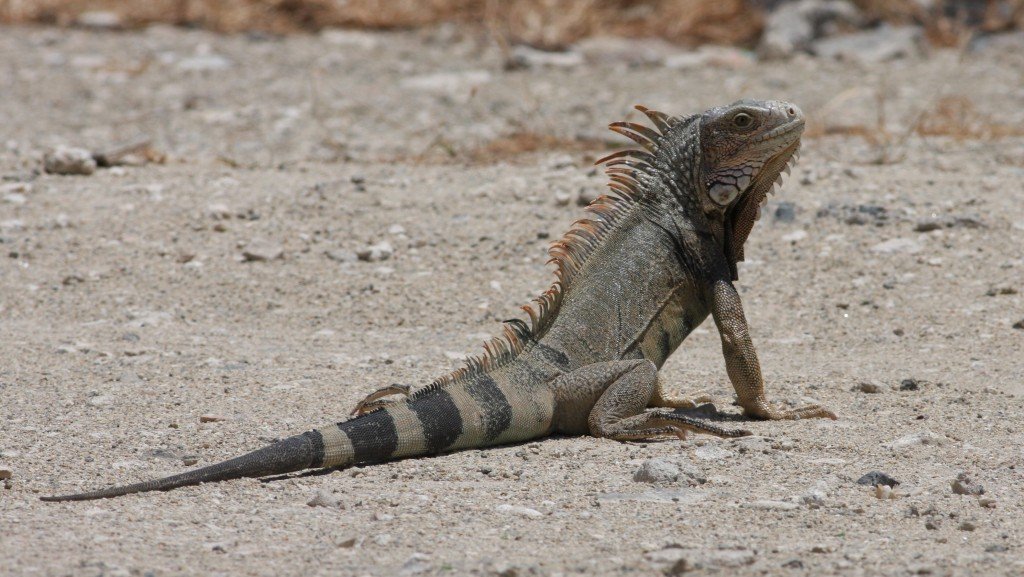
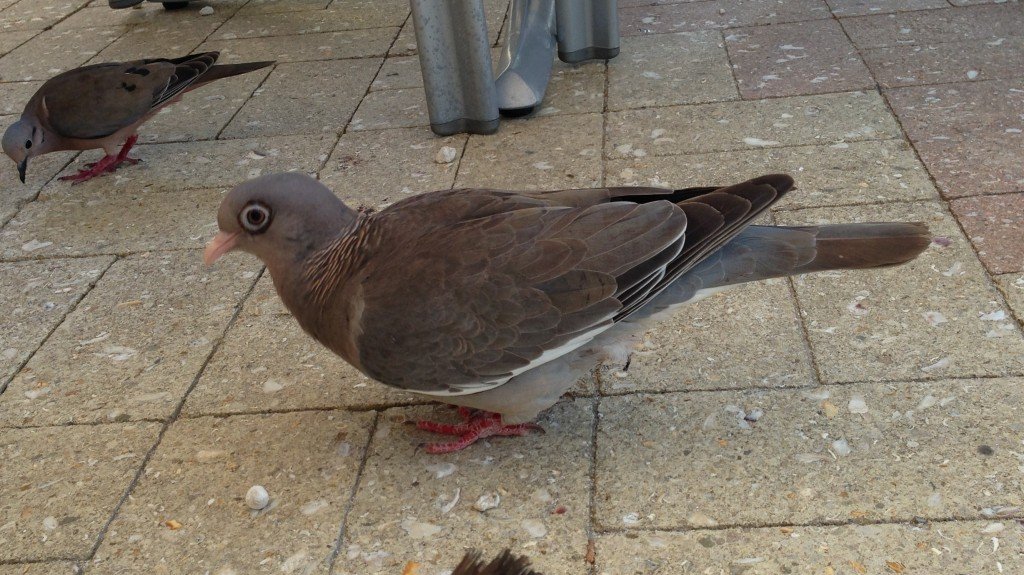
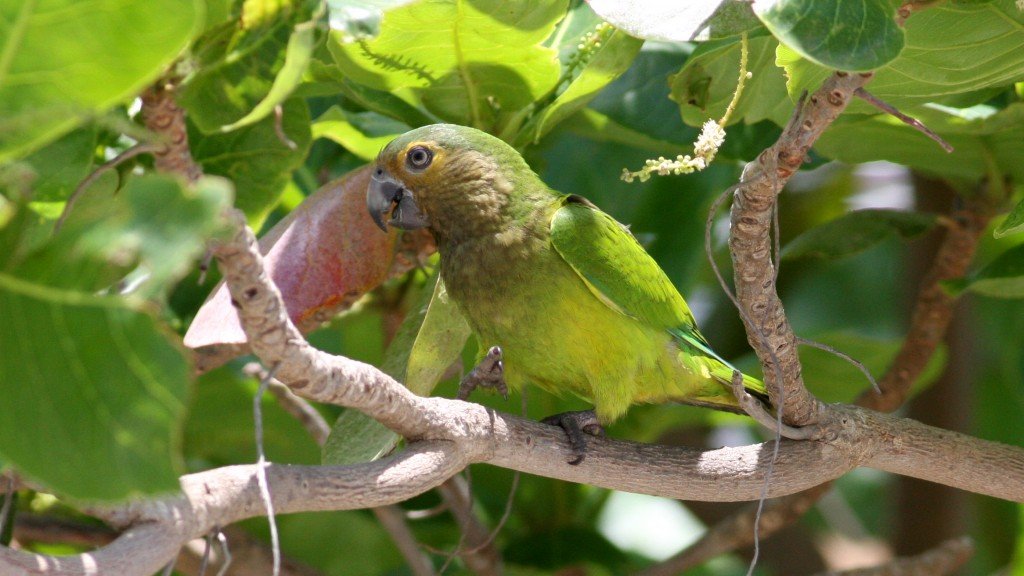



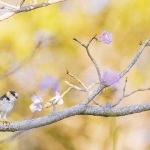
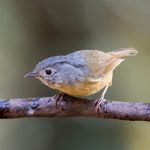





Cuckoo Clock??….
http://en.wikipedia.org/wiki/Cuckoo_Clock_(song)
@Michael Ayers: Or could he have meant “Kokomo”?
@Nate: So I guess Bananquits are the Grumpy Cats of the bird world, then?